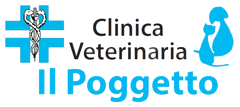Processionary caterpillars
Unfortunately, in our clinics during the spring months, it is not uncommon to encounter severe damage to the tongue and the entire oral mucosa of dogs that have licked or simply touched the hairy caterpillars known as ‘PROCESSIONARIES’.
These dangerous caterpillars form large, silky, white cocoons resembling cotton balls, shaped like flasks, with the expanded part reaching diameters of 30-40 cm. They are suspended from the tips of certain conifers (mainly pines, but also often cypress and fir trees) or near the branch forks of oak trees.
These nests are constructed by the caterpillars of a nocturnal moth belonging to the Notodontidae family, commonly known as the ‘Processionary’. The larvae of these caterpillars are highly hairy and, when leaving the nest, they line up in a single file with the head of one touching the abdomen of the one in front, forming processions that can extend several metres.
Read more
In our regions, there are both the oak processionary (Thaumetopea processionea) and the pine processionary (Thaumetopea pityocampa).
Our dogs are often intrigued by these caterpillars, but if they inadvertently brush their stinging hairs with their tongues, they will immediately start to exhibit severe salivation (intense drooling), show significant discomfort, and may even begin to vomit. If the caterpillar has been fully bitten, extensive ‘burned’ areas may also be observed.
If possible, the mouth and tongue should be rinsed immediately and thoroughly with cold running water to remove any remaining stinging hairs that could continue to irritate the mucosa.
Of course, the affected animal should be taken to the veterinarian immediately for prompt and appropriate treatment.
Unfortunately, the damage caused by these caterpillars to the tongue can be extremely severe, sometimes leading to necrosis of large areas, which may either fall off on their own in the following days or require surgical intervention.
These caterpillars can also be dangerous to humans: indeed, the damage caused by the penetration of their hairs into our skin can range from minor to severe, especially when the hairs or their fragments come into contact with the eyes, nasal mucosa, mouth, or, worse, when they enter the respiratory or digestive tracts.
It is advisable to avoid touching processionary caterpillars or their nests. Upon spotting them, it is recommended to move away and keep your dog away from infested plants immediately.





